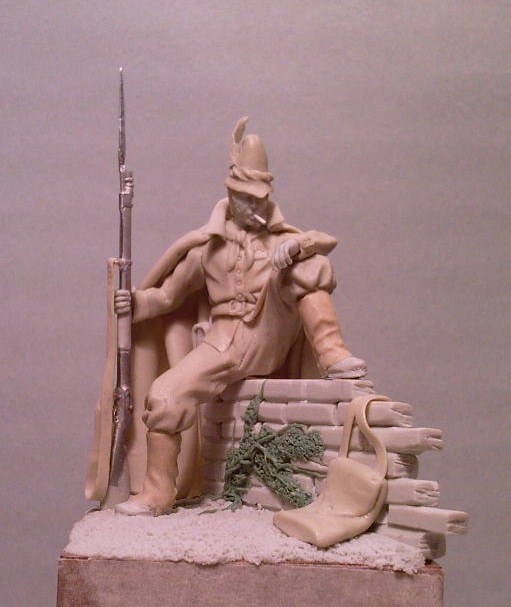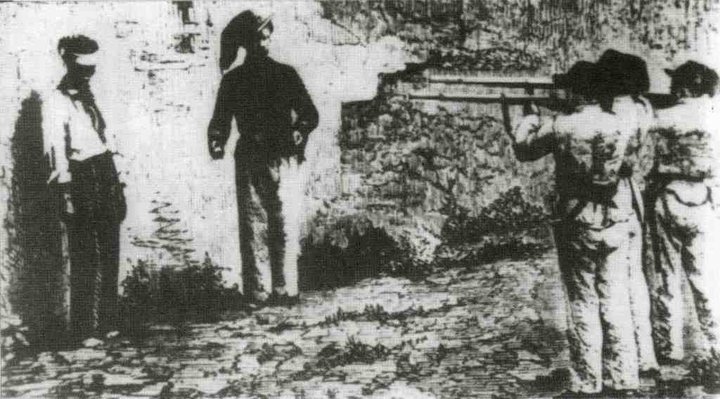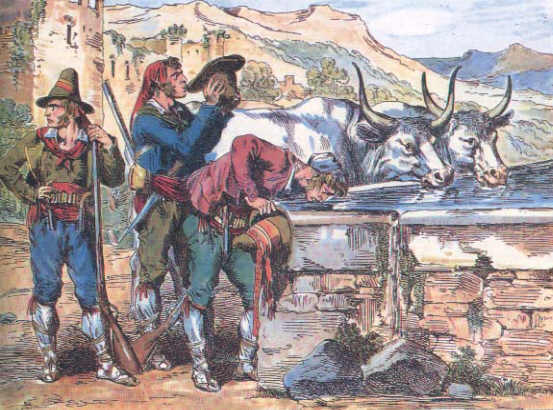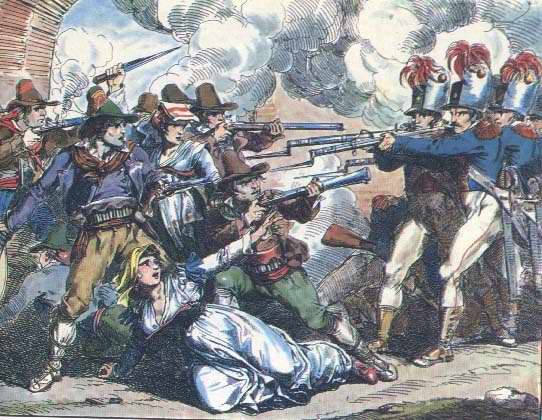The blackest page in the history of Italy is still covered by military intelligence at a distance of 150 years after the event: 5,212 executions in the South, 500,000 people were arrested,
150 years after the event: 5,212 executions in the South, 500,000 people were arrested, many of which are interned in the camps of Fenestrelle Savoy and San Maurizio, a thousand feet high, in Piedmont, the bodies dissolved in lime; 62 countries razed to the ground, the
many of which are interned in the camps of Fenestrelle Savoy and San Maurizio, a thousand feet high, in Piedmont, the bodies dissolved in lime; 62 countries razed to the ground, the persecution of the Catholic Church, mass executions, rapes.
persecution of the Catholic Church, mass executions, rapes. 
A story goes unmentioned, covered up and distorted
tireless researchers, eager to make known stories buried under the thick dust of time, begun to extract documents from the archives . It 'came out so different , different, unusual, surprising: the first ethnic cleansing of the modern age. The Army retain 150,000 pages that contain the truth of the insurrection against Piedmont in the aftermath of Italian unification, that controversial period speciously defined "brigandage"
It 'came out so different , different, unusual, surprising: the first ethnic cleansing of the modern age. The Army retain 150,000 pages that contain the truth of the insurrection against Piedmont in the aftermath of Italian unification, that controversial period speciously defined "brigandage"
The Risorgimento was always seen and told how he wanted the prevailing party: this good, the other, the loser, bad. There is another fact blood, mud, pain, cruelty, ferocity. It was the time of the robbers: Fighters of a peasant revolt, the liberation movement
In 1860, the fall of the Bourbon reign, defeated by the army of Garibaldi's volunteers, the South was already attached to other states under the rule of the House of Savoy and stood united in the appointment conditions of profound social backwardness and great imbalance. The distribution of wealth, which drew its only source from agricultural production, was unfairly divided between a small number of landowners, while the mass of agricultural laborers was reduced to starvation.
united in the appointment conditions of profound social backwardness and great imbalance. The distribution of wealth, which drew its only source from agricultural production, was unfairly divided between a small number of landowners, while the mass of agricultural laborers was reduced to starvation.
Garibaldi had raised hopes in the masses of the southeners, a radical renewal of society, but the new government in 1861 took the reins of power was the expression of the bourgeoisie,i t faced the issue of the South with a pact of alliance between the rich landowners, avoiding the promise of much needed land reform
The economic and social structures remained unchanged, the conditions for the weak ended and even got worse. For this reason, of course, the robbers enjoyed the unconditional sympathy of the rural masses that identified them the same way as real heroes, the champions of justice who took the sword against the abuses of the rich and against the authoritarian imposition of the new master: the Kingdom of Italy.
Since the early months of 1860, the assumed size of brigandage forced the Piedmontese soldiers to bring their number in the South from the initial 22,000 to 50,000 in a contingent of 1861, increased to 105,000 the following year until it reaches the number of 120,000 men in l863.
of 1861, increased to 105,000 the following year until it reaches the number of 120,000 men in l863. 
At a distance of a century and a half, although we have become accustomed to shocking images,but the terror in the south still arouses horror and dismay as with the famous photo of the soldier as a trophy showing the severed head of a robber, or one that shows a soldier of Savoy who tortures and humiliates a prisoner .
of the soldier as a trophy showing the severed head of a robber, or one that shows a soldier of Savoy who tortures and humiliates a prisoner .
Often, the masses were involved in clashes against their will, paying with the destruction of entire villages, executions without trial of hundreds of peasants wrongly considered supporters of the robbers.
Crimes so abhorrent, the historical truth was able to emerge The events of history after unification were, however, artfully concealed, hidden, buried under a thick blanket of forgetfulness, almost erased,
There is none, in fact, who knows, albeit briefly, the sad fate thousands and thousands of southerners imprisoned in concentration camps of northern Italy after the dissolution of the state and the advent of the Bourbons in the South Piedmont Yet many died from the hardship, deprivation, ill-treatment, extrajudicial executions, concentration camps prepared by the Savoy, which, of course,were not very different from thosea century later, the Nazi torturers.
The Savoy government found itself having to face a mass of very large military Neapolitan stragglers.. The Savoy government, faced with a real emergency that threatened to explode at any moment (in fact, throughout the South was inflamed by the revolt of brigands), Immediately after the South, however, sensing the danger of the situation, they devised an "evacuation plan" especially moving prisoners by sea, the former Bourbon soldiers to the north, away from the hotbeds of revolt.
The port of arrival of ships laden with prisoners was particularly Genoa, from where they were quickly sorted into various places of destination. The main were: Fenestrelle, a small town a hundred kilometers from Turin, where there was a massive fortress in San Maurizio Canavese, near Turin, and then Alexandria, Milan, Bergamo and Genoa.
Thousands of other southernnsoldiers, ) were confined in various islands of Gorgona, Elba, Giglio, Goatherd, Ponza.
In the camps and prisons, forced to accommodate more people than they might contain, the sanitary conditions were appalling. .
Fenestrelle; eight thousand of these were concentrated in the area of S. Maurizio. Treated like animals, crammed into ships, kept without food and water for days, were thrown into unknown lands cold, inhospitable to concentration camps. "
Many could not endure the hardship and despair, and so decided to put an end to their miserable existence by resorting to suicide.
Another newspaper at the time, "Harmony", wrote: "Most inmates are poor and naked, ragged, full of lice, a little bread is given for food,
And like this, the raw evidence of what happened in the prisons of the Kingdom of Italy in this dramatic decade (1860-1870) can be brought back
Thus the Piedmontese rulers who hoped to have finally resolved the problem had in fact moved away from the outbreak of the revolt thousands and thousands of people, keeping them away from the robbers who were firing with their armed uprising the whole southern part of the Peninsula.
But the situation for the Piedmontese was not easy: quickly herded the prisoners into the prisons of the North had become a number so large as to make it impossible to maintain public order. A little 'everywhere, riots broke out in prisons, riots, attempts to escape
It was then that the Savoy government attempted a sort of "final solution".
In an attempt to clear the prisons of the kingdom from the dangerous mass of former Bourbon soldiers, they thought it well to "arrange" a place where they would not have given more trouble.
And at this point, as often happens in Italian historical events, the situation becomes tragic-comic characters.
The project was to be able to obtain from the Portuguese Government for the grant of an uninhabited island in the middle of the Atlantic Ocean where "deposit" togliendoseli southern prisoners, so, definitely go back.
Fortunately, however, the Portuguese opposed an outright refusal and the infamous design could not get through. But the rulers of Piedmont did not give up, still fully intend to proceed with the "final solution", despite the disapproval that rose higher and higher across Europe. And so, in 1868, after all other similar attempts fruitless, Menabrea Prime Minister gave his officials the task of contacting the Republic of Argentina.
It was even identified the region in which the prison would be : Patagonia, a desert and inhospitable lends itself beautifully to the task. But the Argentine government decided to reject the request . And so, despite the efforts, the issue remained unresolved and the thousands of prisoners were crammed into filthy Italian prisons under inhumane conditions.
In those places, more than 40,000 thousand people were made deliberately to die of hunger, starvation, abuse and disease.
They were close together with murderers, priests, young, old, poor common people and intellectuals. No mattresses, no blankets, no light, in places where the temperature was almost always below freezing, Very few survived. The bodies were dissolved in the lime contained in a large tub. Death without honor, without graves without headstones and remember to remain no traces of misdeeds.
Even today, entering the fortress of Fenestrelle, on a wall is still visible the inscription "Everyone is not as it is but what it produces" (the writing is very reminiscent of Nazi concentration camps).
So here outlined, albeit briefly, a sad story for a long, long time, has been completely removed from the official history in order not to tarnish the image of the Risorgimento.
No one wants to chase dreams nostalgic or anachronistic restorations, but the real strength of a democracy is measured also in the ability not to deny the historical truth, that would be covering up embarrassing episodes.
Searching the Internet the "Fenestrelle", you can find the tourist route to that location, with no mention of the past. But at www.duesicilie.org / fall you can find the names, with date of birth and origin of some of Fenestrelle martyrs, in the period between 1860 and 1865. Were little more than boys: the youngest was 22 years old, the oldest 32.
After the September 8, 1943, Savoy left Rome to go to the South, where they were able to stay in the saddle with the help of the Southern population, considered loyal to the monarchy.
In the plebiscite of 1946, the South l voted massively in favor of the House of Savoy. s
 150 years after the event: 5,212 executions in the South, 500,000 people were arrested,
150 years after the event: 5,212 executions in the South, 500,000 people were arrested, many of which are interned in the camps of Fenestrelle Savoy and San Maurizio, a thousand feet high, in Piedmont, the bodies dissolved in lime; 62 countries razed to the ground, the
many of which are interned in the camps of Fenestrelle Savoy and San Maurizio, a thousand feet high, in Piedmont, the bodies dissolved in lime; 62 countries razed to the ground, the persecution of the Catholic Church, mass executions, rapes.
persecution of the Catholic Church, mass executions, rapes. 
A story goes unmentioned, covered up and distorted
tireless researchers, eager to make known stories buried under the thick dust of time, begun to extract documents from the archives .
 It 'came out so different , different, unusual, surprising: the first ethnic cleansing of the modern age. The Army retain 150,000 pages that contain the truth of the insurrection against Piedmont in the aftermath of Italian unification, that controversial period speciously defined "brigandage"
It 'came out so different , different, unusual, surprising: the first ethnic cleansing of the modern age. The Army retain 150,000 pages that contain the truth of the insurrection against Piedmont in the aftermath of Italian unification, that controversial period speciously defined "brigandage"The Risorgimento was always seen and told how he wanted the prevailing party: this good, the other, the loser, bad. There is another fact blood, mud, pain, cruelty, ferocity. It was the time of the robbers: Fighters of a peasant revolt, the liberation movement

In 1860, the fall of the Bourbon reign, defeated by the army of Garibaldi's volunteers, the South was already attached to other states under the rule of the House of Savoy and stood
 united in the appointment conditions of profound social backwardness and great imbalance. The distribution of wealth, which drew its only source from agricultural production, was unfairly divided between a small number of landowners, while the mass of agricultural laborers was reduced to starvation.
united in the appointment conditions of profound social backwardness and great imbalance. The distribution of wealth, which drew its only source from agricultural production, was unfairly divided between a small number of landowners, while the mass of agricultural laborers was reduced to starvation.
Garibaldi had raised hopes in the masses of the southeners, a radical renewal of society, but the new government in 1861 took the reins of power was the expression of the bourgeoisie,i t faced the issue of the South with a pact of alliance between the rich landowners, avoiding the promise of much needed land reform

The economic and social structures remained unchanged, the conditions for the weak ended and even got worse. For this reason, of course, the robbers enjoyed the unconditional sympathy of the rural masses that identified them the same way as real heroes, the champions of justice who took the sword against the abuses of the rich and against the authoritarian imposition of the new master: the Kingdom of Italy.

Since the early months of 1860, the assumed size of brigandage forced the Piedmontese soldiers to bring their number in the South from the initial 22,000 to 50,000 in a contingent
 of 1861, increased to 105,000 the following year until it reaches the number of 120,000 men in l863.
of 1861, increased to 105,000 the following year until it reaches the number of 120,000 men in l863. 
At a distance of a century and a half, although we have become accustomed to shocking images,but the terror in the south still arouses horror and dismay as with the famous photo
 of the soldier as a trophy showing the severed head of a robber, or one that shows a soldier of Savoy who tortures and humiliates a prisoner .
of the soldier as a trophy showing the severed head of a robber, or one that shows a soldier of Savoy who tortures and humiliates a prisoner .
Often, the masses were involved in clashes against their will, paying with the destruction of entire villages, executions without trial of hundreds of peasants wrongly considered supporters of the robbers.

Crimes so abhorrent, the historical truth was able to emerge The events of history after unification were, however, artfully concealed, hidden, buried under a thick blanket of forgetfulness, almost erased,

There is none, in fact, who knows, albeit briefly, the sad fate thousands and thousands of southerners imprisoned in concentration camps of northern Italy after the dissolution of the state and the advent of the Bourbons in the South Piedmont Yet many died from the hardship, deprivation, ill-treatment, extrajudicial executions, concentration camps prepared by the Savoy, which, of course,were not very different from thosea century later, the Nazi torturers.

The Savoy government found itself having to face a mass of very large military Neapolitan stragglers.. The Savoy government, faced with a real emergency that threatened to explode at any moment (in fact, throughout the South was inflamed by the revolt of brigands), Immediately after the South, however, sensing the danger of the situation, they devised an "evacuation plan" especially moving prisoners by sea, the former Bourbon soldiers to the north, away from the hotbeds of revolt.

The port of arrival of ships laden with prisoners was particularly Genoa, from where they were quickly sorted into various places of destination. The main were: Fenestrelle, a small town a hundred kilometers from Turin, where there was a massive fortress in San Maurizio Canavese, near Turin, and then Alexandria, Milan, Bergamo and Genoa.
Thousands of other southernnsoldiers, ) were confined in various islands of Gorgona, Elba, Giglio, Goatherd, Ponza.
In the camps and prisons, forced to accommodate more people than they might contain, the sanitary conditions were appalling. .

Fenestrelle; eight thousand of these were concentrated in the area of S. Maurizio. Treated like animals, crammed into ships, kept without food and water for days, were thrown into unknown lands cold, inhospitable to concentration camps. "
Many could not endure the hardship and despair, and so decided to put an end to their miserable existence by resorting to suicide.
Another newspaper at the time, "Harmony", wrote: "Most inmates are poor and naked, ragged, full of lice, a little bread is given for food,
And like this, the raw evidence of what happened in the prisons of the Kingdom of Italy in this dramatic decade (1860-1870) can be brought back
Thus the Piedmontese rulers who hoped to have finally resolved the problem had in fact moved away from the outbreak of the revolt thousands and thousands of people, keeping them away from the robbers who were firing with their armed uprising the whole southern part of the Peninsula.
But the situation for the Piedmontese was not easy: quickly herded the prisoners into the prisons of the North had become a number so large as to make it impossible to maintain public order. A little 'everywhere, riots broke out in prisons, riots, attempts to escape
It was then that the Savoy government attempted a sort of "final solution".
In an attempt to clear the prisons of the kingdom from the dangerous mass of former Bourbon soldiers, they thought it well to "arrange" a place where they would not have given more trouble.
And at this point, as often happens in Italian historical events, the situation becomes tragic-comic characters.
The project was to be able to obtain from the Portuguese Government for the grant of an uninhabited island in the middle of the Atlantic Ocean where "deposit" togliendoseli southern prisoners, so, definitely go back.
Fortunately, however, the Portuguese opposed an outright refusal and the infamous design could not get through. But the rulers of Piedmont did not give up, still fully intend to proceed with the "final solution", despite the disapproval that rose higher and higher across Europe. And so, in 1868, after all other similar attempts fruitless, Menabrea Prime Minister gave his officials the task of contacting the Republic of Argentina.
It was even identified the region in which the prison would be : Patagonia, a desert and inhospitable lends itself beautifully to the task. But the Argentine government decided to reject the request . And so, despite the efforts, the issue remained unresolved and the thousands of prisoners were crammed into filthy Italian prisons under inhumane conditions.
In those places, more than 40,000 thousand people were made deliberately to die of hunger, starvation, abuse and disease.
They were close together with murderers, priests, young, old, poor common people and intellectuals. No mattresses, no blankets, no light, in places where the temperature was almost always below freezing, Very few survived. The bodies were dissolved in the lime contained in a large tub. Death without honor, without graves without headstones and remember to remain no traces of misdeeds.
Even today, entering the fortress of Fenestrelle, on a wall is still visible the inscription "Everyone is not as it is but what it produces" (the writing is very reminiscent of Nazi concentration camps).
So here outlined, albeit briefly, a sad story for a long, long time, has been completely removed from the official history in order not to tarnish the image of the Risorgimento.

No one wants to chase dreams nostalgic or anachronistic restorations, but the real strength of a democracy is measured also in the ability not to deny the historical truth, that would be covering up embarrassing episodes.
Searching the Internet the "Fenestrelle", you can find the tourist route to that location, with no mention of the past. But at www.duesicilie.org / fall you can find the names, with date of birth and origin of some of Fenestrelle martyrs, in the period between 1860 and 1865. Were little more than boys: the youngest was 22 years old, the oldest 32.

After the September 8, 1943, Savoy left Rome to go to the South, where they were able to stay in the saddle with the help of the Southern population, considered loyal to the monarchy.
In the plebiscite of 1946, the South l voted massively in favor of the House of Savoy. s
L' histoire est une suite de mensonges sur lesquels on est d'accord ( N.Bonaparte ).
ReplyDelete